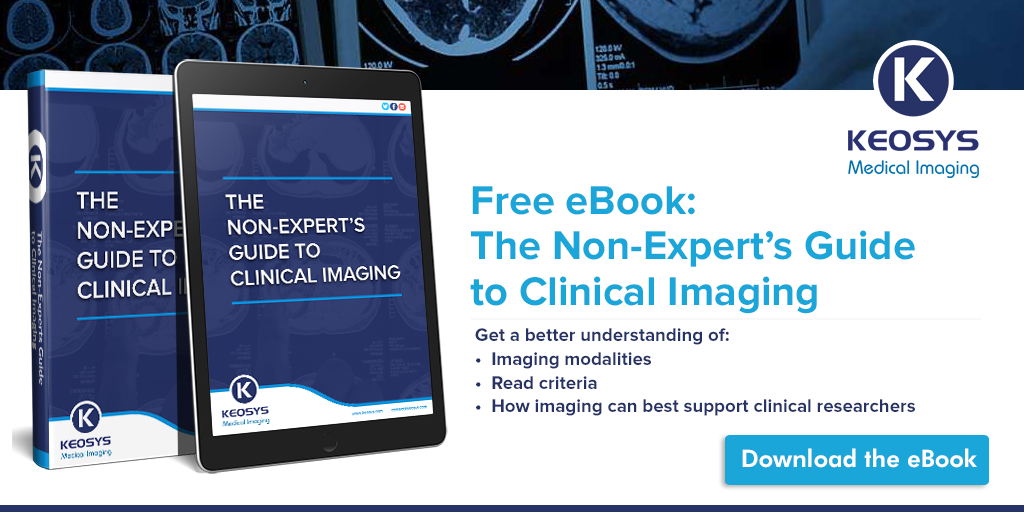This is an excerpt from Keosys' free eBook, "The Non-Expert's Guide to Clinical Imaging." To access the full eBook, click here.
Site Capability
When introducing imaging into your trial, one of the first factors to consider is the imaging capability and experience of your study sites. This includes the imaging technology that is locally available and the software that will be used for analysis. It’s just as important to fully understand the study staff’s expertise and their clinical trial experience as it is to know what scanners are available for use, the number of image readers and the extent of technical knowledge essential to image interpretation. Variation in the capability of sites poses a significant challenge to sponsors and CROs managing trials that include imaging. But there are solutions.
Working in partnership with an imaging contract research organization (iCRO) can take away the headache of having to navigate the complex world of technology, software and read criteria. iCROs provide a wealth of technical, analysis and project management expertise that can help you set up your study sites for success. An expert from an iCRO can liaise directly with study sites, to ensure that the capability and expertise is in place to provide robust imaging data, and to quickly solve any issues that may arise.
Implementing the Optimal Workflow
The complexity of global multicentric trials using advanced imaging modalities makes it essential to develop an optimum workflow to manage every step from image acquisition to interpretation.
Advances in software for image analysis and sharing now makes it simple to ensure that your imaging workflow is accurate, consistent, adaptable and compliant with the needs of regulators.
Ideally, an integrated platform that can manage all aspects of the workflow from upload to QC, storage and analysis is most efficient and accurate. Integrated platforms can prompt the reader when exams are ready to be analyzed and can guide the reader through the analysis of each imaging time point, focusing them on the specific trial endpoints and reducing the chance of errors. An integrated platform also ensures that all data are recorded in the same database reducing risk of errors and creating a clear audit trail.
Another important aspect of the workflow is the transfer of imaging data between study teams, central review and ultimately to the regulator. Storage and transfer of imaging data must be compliant with 21 CFR Part 11 FDA regulations on electronic records and electronic signatures to be considered acceptable as part of a regulatory submission.
Using an integrated software solution to manage imaging data will ensure that this checkbox is ticked, but it can also help to have ongoing access to the expertise of a specialist iCRO to help navigate this component of the study.
Reader Selection and Read Criteria
An important part of establishing the optimum workflow is determining reader selection and read criteria, as discussed in Chapter 3. In its guidance for industry on imaging endpoints in clinical trials⁷, the FDA states that centralized image interpretation “helps to ensure quality control of the images and the interpretations and to decrease variability in image interpretations, leading to a more precise estimate of treatment effect.”
Although there may be some instances where site-based imaging interpretation is justified, perhaps in early-phase studies, for most trials, including a centralization function in the workflow provides a level of independent review that would otherwise be impossible.
Ensuring Compliance and Data Integrity
Regulators want to see the rigorous consistency and objectivity standards of other clinical data applied to image analysis. Sponsors and CROs are therefore being encouraged to develop an imaging review charter. An imaging review charter defines and describes all aspects of the procedures involved in capturing, processing, interpreting and handling image data for a given trial. This sits alongside the full clinical trial protocol and ensures that all unique imaging protocol elements are formally captured and clearly communicated to all stakeholders.
Where multiple clinical experts are providing imaging analysis for a study, a charter ensures that everyone is on the same page, and all are using the same software and methods tailored to the overall trial protocol.




